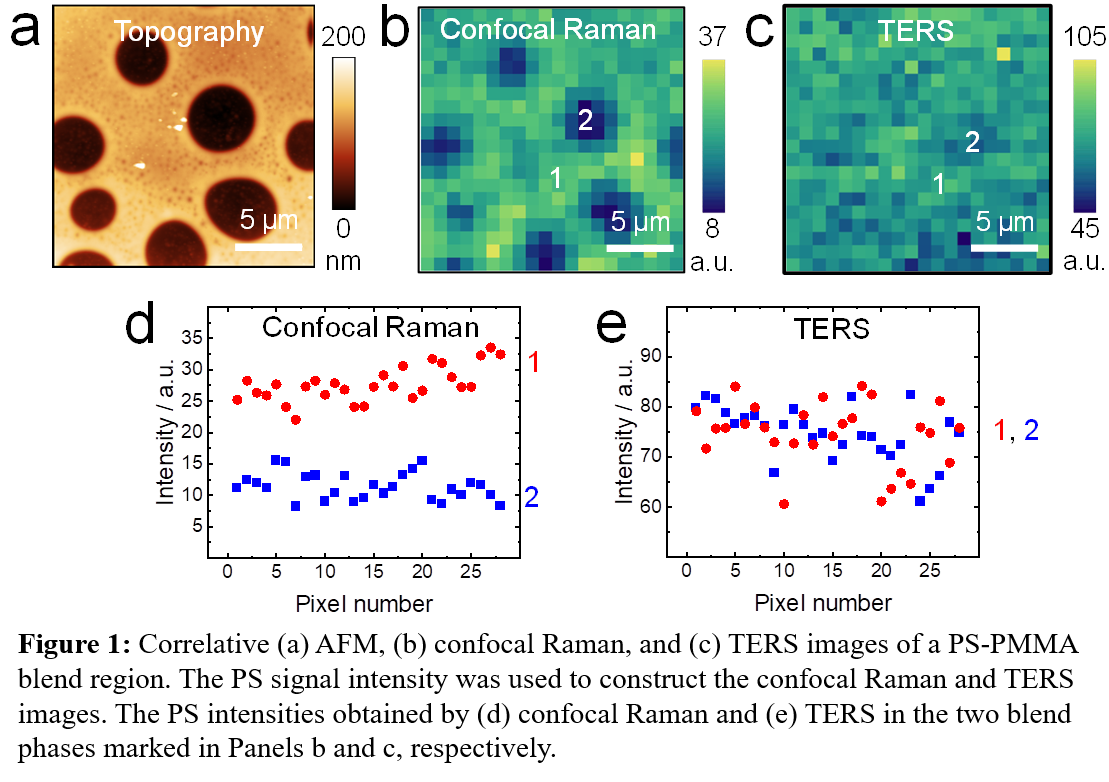Visualizing Surface Phase Separation in PS-PMMA Polymer Blends at the Nanoscale using Tip-Enhanced Raman Spectroscopy
Polymer blend films have a wide range of applications in display devices, solar cells, high-density information storage media, catalysis, and biotechnology.[1] Control of the polymer phase separation is crucial for a successful application of polymer blends in the above-mentioned technologies. Vertical and lateral polymer phase separation can occur at the nanometer length-scale,[2] and therefore, requires analytical tools with ultrahigh sensitivity and spatial resolution for its analysis.
In the last two decades, tip-enhanced Raman spectroscopy (TERS) has emerged as a label-free and non-destructive nanoanalytical tool. In this work, using correlative topographical, molecular, and elemental information, we demonstrate that besides the lateral phase separation,[3] observed by AFM and confocal Raman spectroscopy (Figures 1a and 1b), a vertical phase separation also takes place at the top ca. 20 nm of the polystyrene (PS)-poly(methyl methacrylate) (PMMA) blend surface. Comparison of confocal Raman and TERS imaging (Figures 1b-1e) revealed a uniform PS layer at the blend surface. Complementary XPS measurements reveal the presence of PMMA within the top 9.2 nm of the surface implying that continuous PS layer is present at the sample sub-surface.
Whilst AFM, XPS, and confocal Raman spectroscopy have been used for characterization of polymer blends before, this is the first time that a clear vertical phase separation within 20 nm of the PS-PMMA blend surface was revealed, due to the TERS surface sensitivity. Notably, the full picture is revealed only by correlating the complementary structural, molecular, and elemental information. Given the demonstrated unique ability of TERS to probe surface phase separation, we envisage that it can become an important complementary analytical tool for nanoscale polymer characterization and contribute significantly to the advancement of polymer-based technologies.

[1] X. Li, J. Gao, L. Xue, Y. Han, Advanced Functional Materials, 2010, 20, 259–265.
[2] H. Li, J. J. Cooper-White, Biomaterials Science, 2014, 2, 1693–1705.
[3] S. Harirchian-Saei, M. C. P. Wang, B. D. Gates, M. G. Moffitt, Langmuir, 2012, 28, 10838–10848.